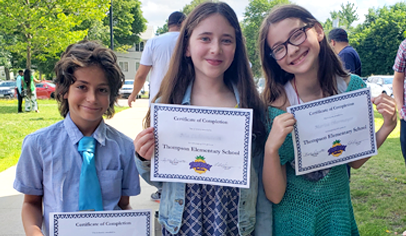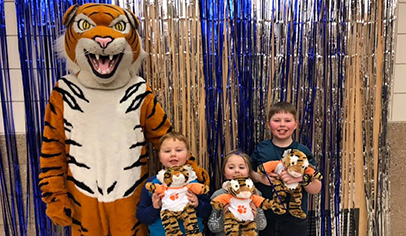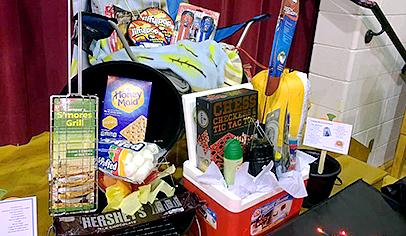Without a doubt, classroom parties are a special part of fond childhood school memories. Kids love to take a break from their usual school routines, while teachers and parents enjoy the chance to celebrate customs and holidays as a group.
The great news about classroom parties is that they never need to break the bank or cause undue havoc to schedules. Organizing parties should be as simple as communicating with the teacher, emailing parents for help and donations, and enlisting a few willing parents to help out at the event.
While different regions and schools vary in what they choose to celebrate, generally many classrooms mark Halloween, Thanksgiving/harvest time, winter holidays, Valentine’s Day, and the end of the school year as ideal times to have a party.
Before you buy candy corn or cupcakes, though, ask about your school’s and district’s food policy. In many places, the amounts and types of sweets allowed are limited. Current rules often mandate that foods brought into schools for parties meet the district’s wellness guidelines. For example, a district may allow parents to send several fruit or vegetable snacks, a low-fat snack like pretzels or popcorn, and one prepackaged (not homemade) sweet treat, with either water or fruit juice (at least 50 percent fruit) as the beverage. Be sure to check with your school to find out any other specific restrictions on types of food that can be brought into the classroom. Ask about food allergies, too.
Party Planning Tips
The first step to planning a successful classroom party is to communicate with the teacher. If she’s experienced with parties, she’ll probably have a firm idea of the types of activities that will work for the class. If she’s newer or wants to change things up, she might welcome suggestions. Either way, it’s in everyone’s best interest to know the teacher’s expectations clearly and up front. Some points you’ll need to cover include activities and games, crafts, and snacks.
Following that conversation, list out everything you’ll need: supplies, snacks, and the number of volunteers needed (total and for each activity). Creating a detailed list not only will make it easy to ask parents for what you’ll need but also will make clear any classroom supplies that you might be able to use (for example, crayons, paper, etc.).
Before you ask parents to help, make sure your email list for class parents is up-to-date. This is something that most room parents or teachers will have compiled early in the school year. If an email list isn’t available, send a paper notice to each family and ask them to reply to your email address. What may seem like a cumbersome step will pay off for the rest of the year.
Decide how you want to solicit contributions of food and supplies. This involves a certain amount of judgment. Some classes are fine with a first-come, first-served approach—parents on the email list reply to everyone else on the list with what they will contribute until all the items (and party volunteers) are accounted for. Another approach is to post sign-up sheets on the classroom door and let parents know you’ve done so.
Party Ideas
We’ve compiled a list of ideas for some of the most common classroom parties to help you get started with party planning. Most of the suggested ideas are suitable for all elementary grades and can be modified for older or younger children; some ideas are specific to younger or older elementary students.
Halloween
Activities
Younger elementary (preschool through 1st grade): Cara Carroll, who blogs at The First Grade Parade, shared a simple paper plate mummy project. Have kids use a paper plate for the face and a black strip of construction paper and two orange circles for the eyes, then rip pieces of white paper to create the mummy’s “wrappings.” The kids then write about what their “mummy” does for them when they get scared.
Older elementary (grades 2-4): Carve pumpkins and use the seeds to practice math skills. Set up six carving stations, each with an adult volunteer. Ask parents to donate a total of about six medium-size pumpkins, and ask each volunteer to bring safe carving knives for the kids, one larger knife for the adult to cut open the pumpkin, a large spoon for scooping out seeds, and a large bowl. Each group will weigh their pumpkin and meas-ure its circumference. Adults cut off the top, then students count seeds. Each group reports their information, and the class determines the maximum, minimum, and average numbers of seeds. As a final step, each group decides on how they want to carve their pumpkins. (Note: This can get messy! Make sure to tell volunteers to cover all surfaces with newspaper.)
Game
Mummy Wrap: This idea from RoomMomSpot.com is guaranteed to bring on the giggles. Divide the kids into teams of two—one person is the mummy and one person is the wrapper. Give the wrappers a roll of toilet paper and have them wrap their teammate quickly. Whichever team is done first wins. For a variation for older kids, once the mummies are wrapped, have a mummy limbo contest. Use a broomstick and have the kids limbo as low as they can go without breaking their toilet paper wrapping.
Snacks
Carrots with dip; fruit salad with sliced oranges, cantaloupe, and raisins. Sweet treat: prepackaged Halloween crispy rice treats, packaged cider doughnuts, small pumpkin muffins, or small Halloween-theme cupcakes.
Thanksgiving/Harvest
Activities
Younger elementary (preschool through kindergarten): Make a “Very Special Turkey” with paper, paint, crayons, and glue. For each child, paint one palm and thumb with brown paint, then paint the other four fingers with whatever color they choose—these are the feathers. Place the hand paint-side down on a white sheet of paper preprinted with this poem:
This isn’t just a turkey
As anyone can see
This very special turkey
Was made by hand by me!
(Author unknown)
Have each child sign the bottom. The next day, they can add the turkey’s features with crayons and mount it on construction paper with glue.
Older elementary: Create pictures of thanks. Have each child trace and cut a picture frame from cardstock. Using cardboard or construction paper, have them make a drawing or message of thanks that they can glue to the back of the frame.
Snacks
Apple slices, vegetable cornucopia, baggies of popcorn. Sweet treat: pumpkin muffins or cookies.
Winter Holidays
Activity
Build gingerbread houses and practice math. Have groups of five to six children (and one adult volunteer) build gingerbread houses using graham crackers, royal icing, and a variety of candy decorations (spice drops, chocolate candies, small hard candies). Older children who’ve started geometry can calculate the area, perimeter, and volume of their creations, while younger children can make smaller, one-dimensional houses on paper plates.
Game
Move the Snow: The blog Mommyapolis.com suggests this fun game where kids stand in two lines and transfer a cotton ball from spoon to spoon from one end of the line to the other. The winning team is the one with the most “snow” in the bucket at the end.
Snacks
Fruit skewers with yogurt dip; strawberries with whipped cream. For a sweet treat, serve sugar cookies or make marshmallow snowmen—attach several large marshmallows using icing, and allow the children to decorate with a few small candies.
Valentine’s Day
Activity
Make valentine ornaments. Using cardstock, glue, glitter, and markers, kids can cut a heart-shaped ornament and decorate with craft supplies or a simple printed poem. If they finish quickly, allow them to make several.
Game
Matchmaker: Teachmama.com has a great idea for a game that will inspire students to think and interact. Print out pictures of famous partners or pairs (Mickey and Minnie, salt and pepper, peanut butter and jelly) and tape one on each child’s back. Players search for their other half by asking yes/no questions to classmates.
Snacks
Red pepper strips and grape tomatoes with dip; fruit cups in small cupcake wrappers (cut the tops off strawberries and slice to resemble hearts). Sweet treat: heart-shaped cookies or brownie bites.
End of the Year
Activity
Decorate T-shirts. Kids will have great fun while creating a sweet memory of their year together. Use T-shirts in various sizes and fabric markers. Allow younger kids to decorate as they wish, and give older students the option of signing each other’s shirts. Have one volunteer per about five or six children.
Snacks
Rainbow fruit skewers; frozen fruit pops; yogurt parfaits—layer cups with vanilla yogurt and fresh fruit. Sweet treat: ice cream cups.
























